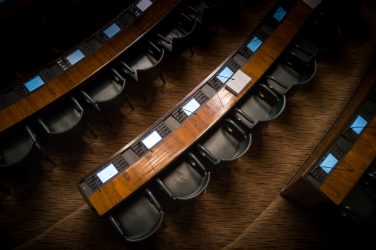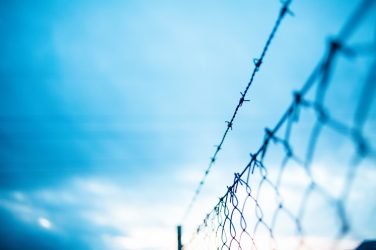Misinformation and fake news are a constant companion of a pandemic, such as COVID-19. What effects and consequences does it have and what is the best way to deal with it? E&M‘s author Isabel Flanagan’s notes:
Over the last few weeks there is one word which has united all of Europe – Coronavirus. Every corner of the continent has been affected by it somehow, with people either having trouble coming home, being asked to self-isolate, knowing someone who has the virus or battling with it themselves. It is overwhelming, nerve racking and deeply disheartening all at once – and reading the stats on the virus only deepens these feelings further.

People’s fear of contracting and spreading the virus is driving them to find information, to help keep themselves and their loved ones safe. I don’t know about you, but I can now recite the most common symptoms of the virus – dry cough, high fever, fatigue. Wash your hands for at least 20 seconds (the same length of time as the happy birthday song). Don’t leave your house unless absolutely necessary. Even then, try and stay 2 meters away from another person.
Health experts recognise that communicating these key facts help people stay healthy and in turn help slow down the spread of the virus. But the rise of fear has come with a flurry of disinformation and misinformation. Disinformation, where false news is intentionally spread among the public, and misinformation, which is false news which can be spread unintentionally or without malice.
Everyone needs to be aware of the impact of false information and take steps to promote only what is true.
Within the context of the Coronavirus outbreak, both exists and are undermining public health information campaigns. There has been a slew of false stories about the virus, from cold weather kills the virus to spraying alcohol on your body to disinfect yourself. (Neither are correct!) Even trusted news outlets are susceptible to confirming these stories. One of the more popular internet conspiracies is the Coronavirus is a ‘Wuhan Virus’ created and released from a government lab. Back in January 2020 this story was actually picked up by the Washington Post, which said the Coronavirus is a Chinese bioweapon leaked from the Wuhan Institute of virology. In turn the Washington Post article was then cited by the BBC and shared across the internet. Both the BBC and Washington Post retracted these stories soon after publishing, but it demonstrates just how hard it is to separate fact from fiction.
How to find trustworthy information
The World Health Organisation (WHO) has labelled this rapid spread of false information an infodemic– where there is an over-abundance of information making it hard for people to find and believe trustworthy sources. The WHO has been working to tackle the infodemic and released a ‘myth busting’ page, which directly speaks to some of the health rumours on the internet. They have also been working with social media companies to directly communicate to people. For example, there is a WHO-WhatsApp messaging service where people can subscribe to Coronavirus alerts.
The EU has also flowed a similar strategy to the WHO, linking people straight to WHO news sources or working in ‘close cooperation with online platforms’. The EU has also provided specific a database of communication documents.

These efforts show there are ways of tackling misinformation online. Before the pandemic, governments and big tech companies alike were critiqued for not tackling fake news enough. But both the government and social media companies have now acted swiftly and clearly in communicating key messages to the public.
This should not stop after the pandemic. Tackling misinformation and disinformation in the long term includes restructuring how online information is shared and thought about. The good news is that the steps towards this are already being completed. There are already education programmes to help kids identify fake news and they are being integrated into curriculums. The EU also listed disinformation as a top priority for Europe’s digital future to promote an open, democratic and sustainable digital society.
Key priorities: empowerment and awareness
But what is needed right now? Empowerment and awareness. Everyone needs to be aware of the impact of false information and take steps to promote only what is true. Some easy steps to follow are:
- Follow medical experts’ advice – take into account your country’s public health advice (e.g. going to the doctor or going into self-isolation) and think: does this piece of news align with government policy?
- Think of the organisation – sometimes checking what organisation is posting the information, and who funds this organisation, can be quick way to identify if the story is true.
- Fact checking– always link before reposting and check against a reputable source. Government health services often have easily accessible coronavirus information pages, but there are also several independent fact checking services available to use before posting information. You can also follow specialised myth buster pages which identify false stories and talk about the coronavirus in an accessible way.
- Don’t engage – if a piece of information looks wrong don’t like, don’t comment and don’t repost. This stops the social media algorithms from making the post viral.
- Report it – social media has a function where you can flag questionable content. This will send the post to ‘reviewers’ who can remove the post.
This is a moment to support each other – promoting accurate information is part of that. No one has the answers right now, but actively identifying and spreading accurate information about COVID-19 is one thing you can do to help feel empowered and also empower others to deal with the virus.









Show Comments
Kevin P Flanagan
Timely and throughout provoking .
Salaidh Freemon Clough
Hello and thank you for this blog is a true inspiration.. Salaidh Freemon Clough
Haily Welsh Linsk
el blog Superbe, qui transpire la pasión à l’pur de Estado … Haily Welsh Linsk
Comments are closed.